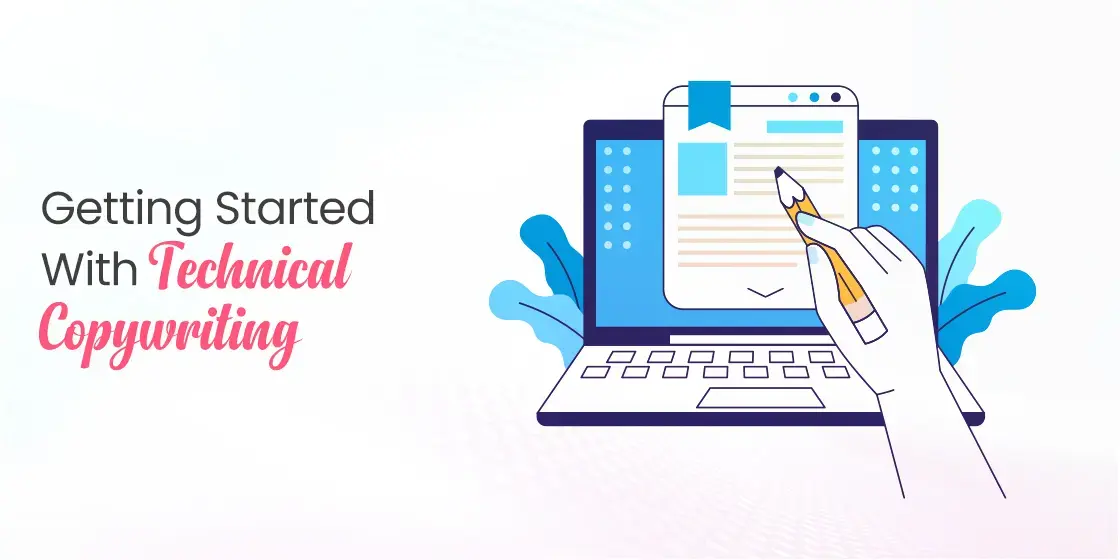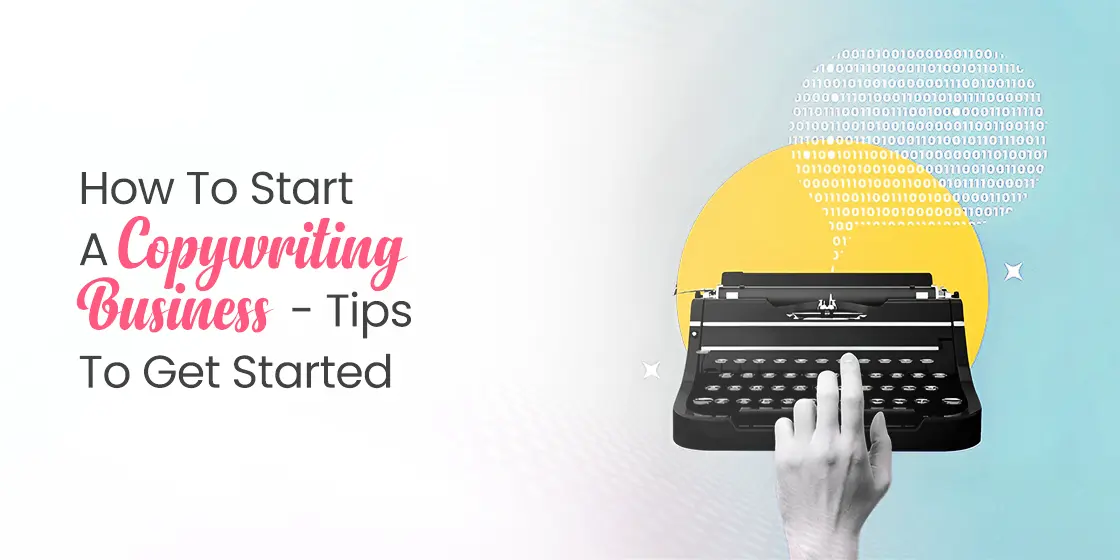Table of Content
A Quick Guide for the Beginners to Master Technical Copywriting
Creating compelling copies for web and other distribution platforms is a top priority of many companies. It builds a strong base for their promotions, defining each and every prospect of the company in a strong manner. Just like marketing copies, they also pay attention to the development of technical copies. These are quite different from the conventional marketing materials, as they solely focus on the description of product features. Mastering technical copywriting is therefore a bit hard, which is why many companies take help from professional copywriting services to get the job done.
Technical copywriting is quite different from the other fields of writing. It requires in-depth knowledge about the relevant subject, hence it can’t be done by a random writer. There are some prerequisites that needs to be followed before writing a technical copy. The background knowledge of the product is termed very important in this regard, because it helps to build your base related to the copy. Similarly, understanding the required tone and style is also important, because technical copies are written in a bit different manner as compared to conventional copies.
If you do not know much about technical copywriting, this blog would prove to be a good read for you. It will let you know about the methods that should be followed in technical copywriting. Based on them, you can craft a good technical copy for any kind of product that provides specialized features. Let’s start from the basics understanding what is technical copywriting and what sort of points it defines to the readers.
What is Technical Copywriting?

Technical copywriting refers to the specialized practice of writing content that effectively communicates complex technical information in a clear, and concise manner. Unlike general copywriting, technical copywriting is targeted towards audiences who require detailed and accurate information about technical products, services, or processes. It may involve writing manuals, product descriptions, white papers, case studies, and more, often within industries such as technology, engineering, software development, and healthcare.
A key element of technical copywriting is its dual role in both educating and persuading. While it involves breaking down complex jargon and explaining technical details, it also aims to convince the reader of the benefits of a product or service. This blend of technical writing and marketing helps businesses showcase the value of their offerings while catering to an audience that requires more in-depth and factual information.
Effective technical copywriting is essential for businesses that operate in highly specialized fields. It enables them to communicate effectively with potential clients, stakeholders, and users, helping them make informed decisions. Whether it’s writing a compelling case study that highlights the effectiveness of a product, creating user-friendly software documentation, or developing web content for a tech company’s site, technical copywriting bridges the gap between technical experts and their target audiences, ensuring clarity, engagement, and action.
Objective of a Technical Copywriter

A technical copywriter’s primary objective is to create clear, concise, and engaging cornerstone content that translates complex technical data into an easy understandable information. They bridge the gap between technical experts and end-users, ensuring that technical details are communicated effectively. This requires a deep understanding of both the subject matter and the target audience, enabling them to adjust the tone and style of writing to suit technical professionals, business leaders, or consumers with little technical background.
In addition to simplifying complex information, technical copywriters aim to persuade and inform readers, particularly when writing for marketing or product promotion. They highlight the benefits of products or services, illustrating how technical features solve specific problems or meet the needs of the audience. Their writing not only educates but also helps to drive engagement, sales, or adoption of technologies by making the content relatable, compelling, and useful for decision-making.
A technical copywriter also ensures consistency and accuracy, often working closely with engineers, developers, or product teams to ensure that the information presented is precise and up to date. Their goal is to maintain the credibility of the brand or product by providing reliable content while making complex technical information easy to follow. This dual focus on clarity and technical accuracy is vital for fostering trust and ensuring the audience’s understanding and retention of information.
Broad Scope of Technical Copywriters

Technical copywriters play a crucial role across a diverse range of industries, including research, healthcare, engineering, information technology, and finance, among others. In these sectors, they are tasked with producing specialized content that effectively communicates complex information tailored to specific audiences. Their work can encompass a wide array of formats, such as user manuals, technical specifications, and promotional content. By leveraging their vast understanding, technical copywriters contribute significantly to the successful dissemination of information in these fields.
In the technology sector, companies often seek out highly skilled technical copywriters to enhance their marketing efforts and showcase their products and services. These professionals are adept at crafting compelling narratives that not only highlight technical specifications but also emphasize the practical benefits and real-world applications of the technology. This involves understanding the competitive landscape and identifying the unique selling points of a product or service, allowing them to create content that resonates with potential customers.
Moreover, effective technical copywriters prioritize the needs of their clients, ensuring that the content they produce aligns with brand messaging and marketing goals. They collaborate closely with product managers, engineers, and marketing teams to gather insights and data. By engaging in this collaborative process, they ensure that the final output not only meets the technical accuracy required but also addresses the specific pain points of the target audience. Ultimately, this tailored approach enhances the effectiveness of marketing campaigns and supports informed decision-making among customers.
Best Tips for Technical Copywriting

Many beginners do not know how to start technical copywriting. It is certainly a different type of copywriting that requires proper understanding and knowledge of the relevant subject. Furthermore, writers also need to adopt a specific style of writing to craft a technical content, because conventional style does not work here.
If you want to know how to start technical copywriting as a beginner, read the exclusive tips defined below. It will help to build core concepts, letting you know how to create quality technical copies for any kind of product.
Captivate visitors and convert them into customers with compelling web copy!
Drive ConversionsConduct Research
Research is important in any type of direct response copywriting, because it serves as the foundational step that informs every subsequent phase of content creation. Engaging in thorough research allows copywriters to gain a comprehensive understanding of the client’s business, the products or services being offered. This initial investment of time is crucial, as it equips the writer with the necessary insights to craft compelling content. Without this understanding, the risk of misaligning the message with the client’s goals or the audience’s needs significantly increases, potentially undermining the effectiveness of the copy.
A systematic approach to research involves utilizing various resources, including online databases, industry reports, and competitor analysis, to gather valuable information. A few strategic Google searches can yield a wealth of knowledge about market trends, customer preferences, and the unique selling propositions of the client’s offerings. By analyzing the available data, copywriters can identify gaps in the market or opportunities for differentiation, which can be leveraged to enhance the appeal of the content.
Ultimately, effective research not only aids in developing a strong foundation for the copy but also fosters a deeper connection between the writer and the client’s vision. This process allows copywriters to internalize the client’s expectations and articulate them in a manner that resonates with the intended audience. By dedicating time and effort to comprehensive research, copywriters can ensure that their work is not only informative but also strategically aligned with the client’s objectives.
Create an Outline
While crafting an outline may initially seem like an unnecessary step in the writing process, it is, in fact, an essential component that significantly enhances the overall quality your work. An outline serves as a roadmap, guiding the writer through the various points and arguments that need to be addressed. By organizing your thoughts beforehand, you minimize the risk of getting lost in the details during the writing phase. It may require some initial investment of time and effort, but the clarity it provides will save you considerable time in the long run.
A well-constructed outline brings together your main arguments, and relevant sources in a coherent and logical sequence. It allows you to visualize the flow of your content, ensuring that each point builds upon the previous one and contributes to a unified message. This structured approach helps identify gaps in your reasoning or areas that may require additional research. Additionally, having all your key points laid out in advance enables you to easily rearrange or modify them as necessary, ensuring that your final piece reflects the most effective order for your arguments.
By taking the time to develop an outline, you set yourself up for success. This preparatory step helps streamline your writing, as you’ll have a clear direction to follow and a comprehensive view of the points you want to cover. As you transition from outline to draft, you’ll find that the process feels more manageable and organized, allowing you to focus on crafting engaging content effectively. Overall, investing time in creating a strong outline is a vital strategy for producing effective and compelling written work.
Start Writing the Copy
Starting to write technical copy after creating an outline involves a structured approach that ensures clarity, precision, and engagement. First, familiarize yourself with the audience and the specific purpose of the document. Understanding who will read the copy—whether they are industry professionals, beginners, or stakeholders—will help tailor the language, tone, and depth of information presented. This step also involves revisiting the outline to ensure that the content aligns with the audience’s expectations and needs.
Once you have a clear grasp of your audience, begin translating the outline into the actual content. Start by drafting the introduction, ensuring it captures the reader’s attention while clearly presenting the topic and purpose of the document. Use simple and direct language to communicate complex ideas, breaking them down into manageable sections. This will not only enhance readability but also make the technical details more digestible. Follow the outline closely, elaborating on each point with supporting data, examples, or visuals where appropriate.
Finally, once the initial draft is complete, focus on revising and refining the content. Review each section to ensure clarity and coherence, checking for technical accuracy and consistency. Pay attention to terminology, ensuring it is appropriate for your audience, and consider adding glossaries for complex terms if necessary. After the revision, proofreading for grammar, punctuation, and style is crucial. Engaging a colleague or a technical expert for feedback can provide valuable insights, ensuring that the final piece not only conveys the intended message but also adheres to industry standards and best practices.
Consult & Take Feedback
Taking feedback from stakeholders after writing the technical copy of a product is essential for refining the document and ensuring it meets the intended goals. The first step is to establish clear channels of communication with stakeholders, such as product managers, engineers, marketing teams, and end-users. Set up meetings or utilize collaboration tools to present the copy, highlighting key sections and inviting initial reactions. It’s crucial to create an open atmosphere where stakeholders feel comfortable sharing their thoughts, concerns, and suggestions.
Once feedback is collected, categorize it based on themes or issues identified. Prioritize feedback based on its relevance to the overall goals of the document and the importance of the stakeholders providing it. Addressing critical concerns first, such as inaccuracies in technical information or unclear instructions, ensures that foundational issues are resolved early in the revision process. Additionally, it’s helpful to clarify any ambiguous feedback by asking follow-up questions to ensure a comprehensive understanding of the stakeholders’ viewpoints.
Finally, implement the feedback systematically, making necessary revisions to improve the copy based on the insights received. After making changes, consider sending a revised version back to stakeholders for a second round of review, particularly if significant alterations were made. This not only demonstrates that their feedback was valued and taken seriously but also ensures that the document accurately reflects the consensus of the team.
Frequently Asked Questions
| What is technical copywriting? Technical copywriting is the process of creating clear, concise, and informative content that communicates complex technical information effectively to a specific audience. It often involves writing user manuals, product descriptions, and technical documentations. |
| What are the 3C’s of copywriting? The 3C’s of copywriting refer to Clarity, Conciseness, and Creativity, which are essential elements for crafting effective and engaging content. Clarity ensures the message is easily understood, conciseness keeps the writing direct, while the creativity ensures to capture the audience’s attention quickly. |
| What is the difference between technical copywriting and web copywriting? Technical copywriting focuses on conveying complex technical information clearly and accurately. In contrast, web copywriting aims to engage and persuade online audiences through landing pages, blogs, and other similar stuff. |
Final Words
That takes us to the end of this blog in which we have discussed about technical copywriting in detail. A lot of people think that technical copywriting is same as the web or email copywriting. Well, it is certainly not because technical copywriting requires a different tone and style of writing. It is clear and concise, making everything straightforward in the document so that everyone can understand the whole context.
This blog has discussed different tips to educate beginners how technical copywriting is precisely done. By focusing on all the tips defined above, you can enhance your copywriting skills and become an expert capable of creating insightful technical copies for all sorts of products.

Unleash your brand story`s potential with eContentSol – your creative writing companion. We craft narratives that captivate. Ready to elevate your content game? Dive into creativity with us and let`s bring your ideas to life.


